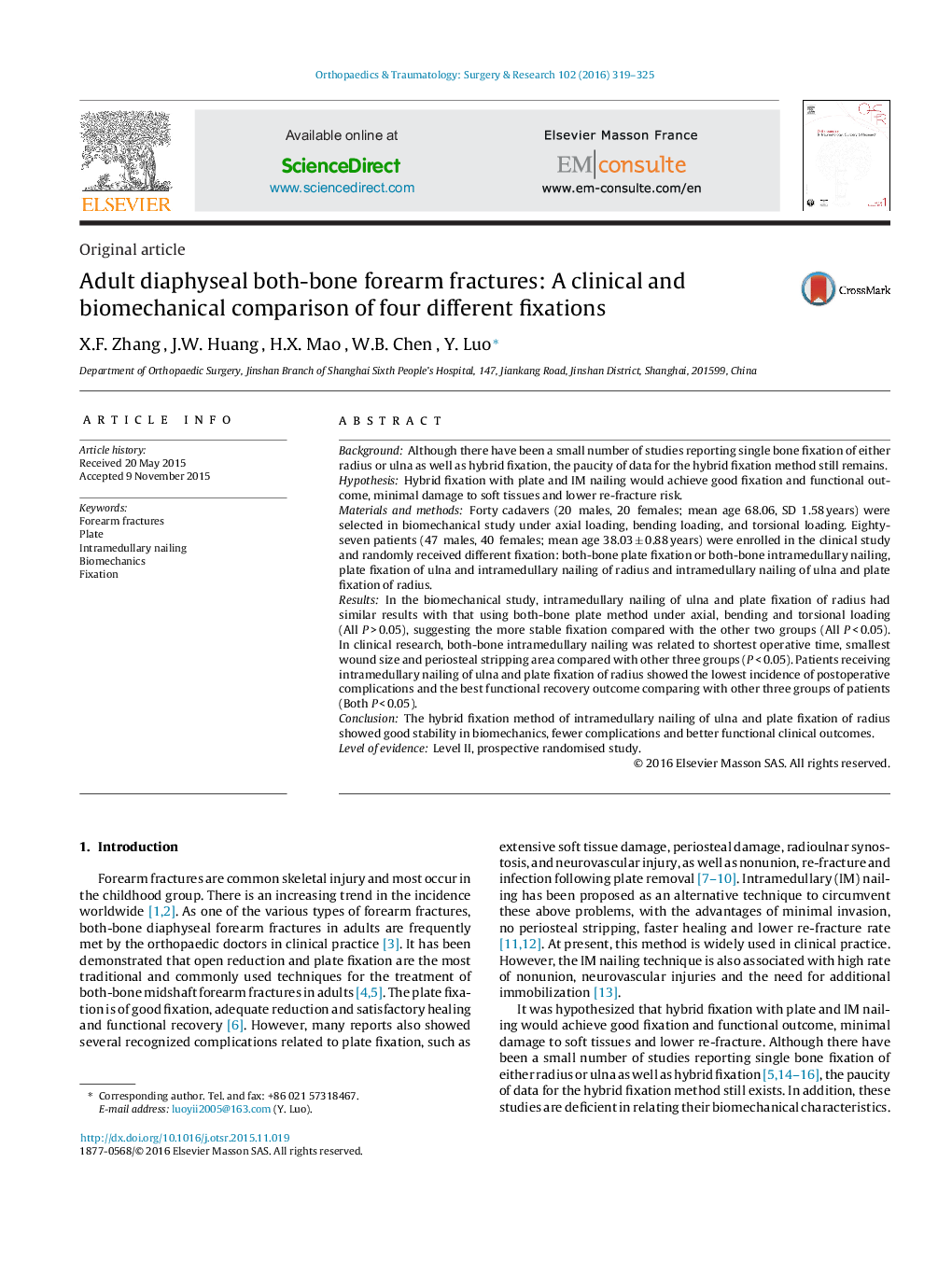| کد مقاله | کد نشریه | سال انتشار | مقاله انگلیسی | نسخه تمام متن |
|---|---|---|---|---|
| 4080733 | 1267565 | 2016 | 7 صفحه PDF | دانلود رایگان |
BackgroundAlthough there have been a small number of studies reporting single bone fixation of either radius or ulna as well as hybrid fixation, the paucity of data for the hybrid fixation method still remains.HypothesisHybrid fixation with plate and IM nailing would achieve good fixation and functional outcome, minimal damage to soft tissues and lower re-fracture risk.Materials and methodsForty cadavers (20 males, 20 females; mean age 68.06, SD 1.58 years) were selected in biomechanical study under axial loading, bending loading, and torsional loading. Eighty-seven patients (47 males, 40 females; mean age 38.03 ± 0.88 years) were enrolled in the clinical study and randomly received different fixation: both-bone plate fixation or both-bone intramedullary nailing, plate fixation of ulna and intramedullary nailing of radius and intramedullary nailing of ulna and plate fixation of radius.ResultsIn the biomechanical study, intramedullary nailing of ulna and plate fixation of radius had similar results with that using both-bone plate method under axial, bending and torsional loading (All P > 0.05), suggesting the more stable fixation compared with the other two groups (All P < 0.05). In clinical research, both-bone intramedullary nailing was related to shortest operative time, smallest wound size and periosteal stripping area compared with other three groups (P < 0.05). Patients receiving intramedullary nailing of ulna and plate fixation of radius showed the lowest incidence of postoperative complications and the best functional recovery outcome comparing with other three groups of patients (Both P < 0.05).ConclusionThe hybrid fixation method of intramedullary nailing of ulna and plate fixation of radius showed good stability in biomechanics, fewer complications and better functional clinical outcomes.Level of evidenceLevel II, prospective randomised study.
Journal: Orthopaedics & Traumatology: Surgery & Research - Volume 102, Issue 3, May 2016, Pages 319–325
